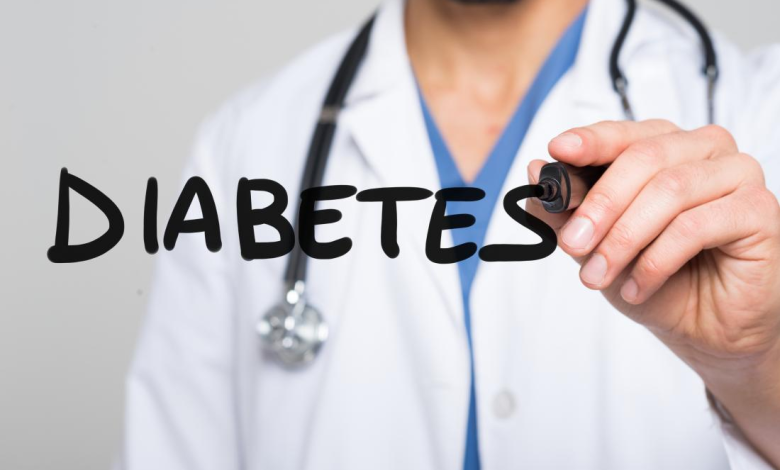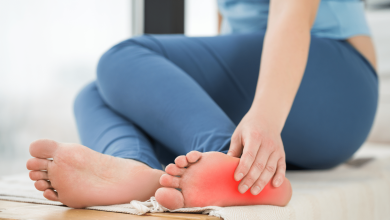What is the link between diabetes and back pain?

What is the link between diabetes and back pain?
Diabetes and back pain have been associated with each other. However, the relationship between symptoms of diabetes progression and back pain has not been studied. The purpose of this study was to link clinical and laboratory measures of diabetes mellitus to the onset of back pain to provide an understanding of the relationship between these conditions. The findings showed that symptoms of diabetes progression were associated with the presence of back pain, suggesting that uncontrolled diabetes may contribute to the development of chronic back pain.
What is back pain?
It hurts in any part of the back. Sometimes you may feel it on your lower back or legs. It can be due to injury or due to age and can occur at any time in life for a variety of reasons. Sometimes people lift heavy weights that cause their back muscles to rupture which can lead to serious problems. Pain can also be the result of a specific condition a person suffers from spinal inflammation, chest tumors, osteoporosis, or aortic disturbances. Our vertebrae help us move. The back muscles, spinal cord, and disc support our body and any of these problems can cause back pain.
Back pain is more common in aged people but it typically occurs between the ages of 30 and 50. It keeps getting worse. Another important factor that may cause back pain is bad posture. It can put pressure on our spine that can cause the muscle to tear and ultimately leads to numerous problems. However, in this following article you’ll be able to find the answer to the question why my Back is killing me?!
Types of Back Problems Linked to Diabetes
Diabetes mellitus is a dangerous metabolic disorder that causes problems in many organs, such as heart, kidneys, and eyes, as well as problems with many connective tissues, such as bone, cartilage, and nerves. There are various types of spinal cord connections that can have a negative impact on diabetes. This page reviews a few common causes of back pain that are thought to be related to diabetes.
-
Lumbar Disc Degeneration
Lumbar disc degeneration is characterized by back pain caused by the collapse of one or more spinal discs in the lower back. After more than 10 years of living with diabetes, individuals are at greater risk of developing severe disc degeneration in the lumbar spine (lower back). If diabetes remains uncontrollable at that time, the increased risk of lumbar degenerative disc disease is progressively compounded. Keeping diabetes under control may be very important in preventing or delaying disc degeneration in the lower back.
-
Spinal Stenosis
Spinal stenosis is a narrowing of the spinal cord (foramina), leaving a small space for the existing spinal nerves.
Diabetes can be associated with the development of spinal stenosis, especially in the lumbar region of the spine. Up to 25% of patients with lumbar spinal stenosis have been diagnosed with diabetes and / or high blood pressure, according to one study. One study found that this connection may be stronger for women; about 36% of women with lumbar spinal stenosis are diagnosed with diabetes.
-
Spinal Epidural Abscess
Spinal epidural abscess refers to a rare infection that can begin in the area between the spinal cord and the spinal cord.
Because diabetes increases the chances of infection, it also increases the risk of an epidural abscess. Diabetes-related factors, such as obesity and high blood pressure, also increase the risk of infection. The risk of abscesses may increase even with viral infections, including COVID-19.
-
Vertebral Osteomyelitis
Vertebral osteomyelitis is usually caused by a bacterial infection, usually from Staphylococcus aureus, which can start in the vertebral bone and spread to the spinal disc.
Diabetes increases the risk of infection and vertebral osteomyelitis. For example, an infected wound on the foot of a diabetic patient may be accompanied by low back pain and fever. Such symptoms may be related to vertebral osteomyelitis.
-
Vertebral Fracture
A vertebral fracture associated with osteoporosis, also known as osteoporotic fracture or compression fracture, is a type of vertebral fracture-blocks that form bones in the spinal column.
Diabetes can change the amount of minerals in the bones, weaken the bones and increase the risk of fractures. Although well-controlled diabetes may have a lower risk of developing vertebral fractures, certain glucose-lowering drugs are associated with a decrease in quality and bone strength.
-
Bone Health
Of all the complications caused by diabetes, bone loss may be less common. The fact is, though, that high glucose levels can damage the collagen that builds bone. This can increase the risk of developing vertebral fractures, among other types and fractures, in people with diabetes. Additionally, an increased risk of fractures in people with diabetes is associated with fractured healing.
-
Obesity
Obesity is a double-edged sword of diabetes. It acts both as a contributing factor in the development of type 2 diabetes and is a problem caused by poorly regulated glucose levels. Whatever the case, obesity is a major cause of back pain due to the increased burden on the spine over time.
-
Neuropathic Pain
Neuropathy, or neuropathic pain, refers to the type of pain or weakness that results from a damaged nerve. Causes of such nerve damage can include injury, trauma, infection, or related conditions such as diabetes or regional pain syndrome.
Diabetic peripheral neuropathy occurs in nearby veins, usually in the hands and feet. About half of all people with diabetes develop diabetic peripheral neuropathy, while neuropathic pain does not affect more than 10% of the general population. Adequate management of glucose levels is a key treatment for diabetes peripheral neuropathy.
For anyone with both diabetes and back pain or related symptoms, a systematic approach to controlling both diabetes and pain may be advisable.
-
Dehydration
For the questions.. Can Dehydration Cause Back Pain? Or How can not drinking enough water cause back pain? Those small discs keep the space between your vertebrae. They have a marshmallow-like consistency and infuse the liquid inside. When the body is dehydrated, it reduces the amount of fluid in the discs, and they become smaller. This results in adequate spinal support. The resulting stress can lead to inflammation, which causes discomfort in your back. It may even cause a herniated disc.
Hydration plays an important role in the health of the whole body. Dehydration can lead to similar pain in the neck or leg. Hydration plays an important role in the health of the whole body. Dehydration can lead to similar pain in the neck or leg. Our body needs to maintain hydration levels so that all our parts work properly. However, you may also feel back pain due to dorsalgia.
Preventing, treating and managing back pain
Like other diabetes problems, back pain can often be prevented by proper control. It can also be treated by a doctor and treated with self-care. You do not have to do all this; just choose one or two that seem comfortable to you.
-
Increase physical movement
Staying motionless… can be dangerous because it can weaken the muscles that support your neck and actually increase neck pain over time. Keep physically active, without overuse. Walking, cycling or swimming, for example, can keep back and neck muscles tense. However, exercise also releases endorphins, the natural chemicals in our bodies that relieve pain.
-
Stretch back muscles
Before you start your day and occasionally throughout the day, stretch your back muscles to protect them from injury and help them work with less pain. Prolonged sitting in one place increases back pain, especially if our chair is pushing us forward or backward. Every 15 minutes or so, change position or make simple suggestions in your seat. Better yet, get up and walk for a minute.
-
Reduce stress
When we are stressed, we tend to breathe slowly and hold our muscles tight. Negative emotions such as depression, anxiety, depression and anger can increase the body’s sensitivity to pain. They suggest listening to cool music or a relaxing tape. Practice deep breathing. Consider a treatment or support group to help deal with stress and depression.
-
Practice meditation
Numerous scientific studies show that meditation has a positive effect on controlling generalized pain and chronic back pain in particular. In another study, people with diabetes who took an 8-week meditation class reported better pain management and functional ability. When nothing else, meditation can help people to breathe better and relax muscles. Meditation can also lower blood sugar levels.
-
Improve diabetes control
The chances of developing chronic back pain (CBP) may increase to the point where the patient’s diabetes is uncontrollable. People with diabetes who had CBP had a higher risk of high blood pressure, had more neuropathy (nerve damage), higher A1C (blood sugar control over the past 2-3 months) and worse cholesterol levels than those without chronic back pain. . Consider improving your diet, getting more exercise (again!), Using some of the tips on our website, and consulting your doctor about medications.
-
Stop smoking
The Cleveland Clinic reports that smokers are almost three times more likely to have more severe pain than non-smokers. Nicotine in cigarettes will temporarily relieve pain, but it also makes the nerves more sensitive and intensifies the pain over time.
-
Reduce alcohol
Like smoking, alcohol can provide temporary relief from pain, but it disturbs sleep and leaves you feeling worse when it is over.
-
Distress yourself in pain
Find something that will capture your thoughts. It could be watching movies, reading, going out in nature, visiting friends or family, work or anything that takes your mind off pain. You will feel better, but don’t forget to stretch from time to time while doing it!
-
Injections for Pain
There are other ways to alleviate back pain and leg pain if a disc herniation, or bone spur compressing the nerve is the cause. For other related questions we would recommend that you speak to your primary health care provider first, and he or she may refer you to a qualified professional to help you administer these injections.
Traction, which is a medical procedure for relieving pain by stretching and re-aligning the spine, can sometimes be helpful with disc herniation, and physical therapy can be very helpful as well.




